1. Introduction
Digital image processing is an important part of digital signal processing and has different applications in different fields. Image enhancement and image restoration are two core issues in digital image processing field. The aim is to get a clearer image [1]. Image enhancement technology is necessary when the observer has higher requirements for the comprehensibility and quality of the image [2]. There are many factors that contribute to the quality of digital images such as low color accuracy, noise, blur. Digital images produced by electronic devices such as smartphones, scanners, and webcams are easily affected by these factors and output unclear image images. Therefore, image enhancement algorithms are often used to improve the quality of these images by processing information such as color and brightness to enhance the contrast and noise removal of the improved image compared to the unprocessed image, making details clearer and the colors more accurate. Now digital images are applied to all aspects of human life, such as medical imaging, celestial observation, TV signal processing, video editing, remote sensing detection, military reconnaissance, image enhancement technology can improve the quality of digital images plays a vital role in these fields is an indispensable important technology [3]. Enhancement methods include HE (Histogram Equalization), BBHE (brightness-preserving bi-histogram equalization), AHE (Adaptive Histogram Equalization), CLAHE (contrast-limited histogram equalization). In some cases, traditional histogram equalization algorithms can output good quality images, but they can only process global images. The effect is not good for images with uneven illumination and rich details. To solve this problem, adaptive histogram equalization algorithms have emerged. Adaptive histogram equalization algorithms can automatically equalize each local area to achieve better results. In addition, CLAHE and BBHE are also improvements made based on traditional histogram equalization algorithms. They can overcome some problems existing in traditional algorithms and have achieved good results in practical applications.
Image restoration technology refers to the process of restoring damaged images in image processing so that restore lost information in the image. Blur is a common problem that image restoration often faces. Blur refers to a shape or area that is unclear due to lack of clear contours or too fast movement. If we can clearly identify the boundary of the object then the image is considered clearer or more comprehensive. Camera shake can cause motion blur, slow shutter speeds can cause slight camera movement and blur photos. For blur we can use various methods to restore the original image including blind deconvolution and non-blind deconvolution which can restore some detail parts of the image under different circumstances. Super-resolution technology is also one of the commonly used methods for image restoration. The acquisition of high-resolution images requires the use of super-resolution (SR) techniques [4]. The aim is to get a high-quality image that can predict low-resolution input images well when resampled on the input image lattice according to an imaging model. The success rate of the super-resolution algorithm depends heavily on the accuracy of imaging process models. For example, when there is an error in the detection of the motion direction, then when the image goes through this algorithm, it does not get a higher quality image, but instead the blurring of the image will increase, and then we can use the regularization method to deal with this model error, and it can also be used for noise processing [5].
Super-resolution technology has a wide range of applications such as being used by NASA to restore clear images of planets and other celestial bodies it is also used for CCTV video enhancement an example being systems that automatically read license plate numbers from blurry video surveillance footage. In addition, this technology is also used for video processing such as detail enhancement etc.
2. Image Enhancement
2.1. Histogram equalization
On the one hand, the statistical characteristics of the grayscale of the image can be reflected by the histogram, the number and frequency of occurrence of each grayscale are counted in the histogram. On the other hand, the histogram also contains two-dimensional information. The horizontal axis in two dimensions is the grayscale of each pixel located in different of image regions, and vertical axis is the number and this individual grayscale pixel’s frequency.
For a grayscale image, the pixels typically range from 0 to 255,
\( {n_{k}}(0 \lt =k \lt =255) \)
\( {n_{k}} {pixel^{ \prime }}s number with grayscale { r_{k}} \)
\( P({r_{k}})=\frac{{n_{k}}}{MN} \)
\( P({r_{k}}) \) is the frequency of the pixel of k, Image’s row and column number are defined as M, N respectively, then
\( {s_{k}}=T({r_{k}})=(L-1)\sum _{j=0}^{k}P({r_{j}})=\frac{(L-1)}{MN}\sum _{j=0}^{k}{n_{j}},k=0,1,2⋯,L-1\ \ \ (1) \)
The upper limit of the digital interval in which the image grayscale is located is defined as L, for example, 256 for an 8bit image, and \( {n_{j}} \) is the number of pixels with grayscale = j.
Through the transformation corresponding to equation (1), the \( {s_{k}} \) of each pixel of the output image finds its corresponding \( {r_{k}} \) in the input image This is a one-to-one correspondence and can also be referred to as a mapping, while histogram equalization is defined as the transformation (mapping) \( T({r_{k}}) \)
If we want a more homogeneous image histogram, we can increase the intensity of the darker edges (Figure 1 and 2).
HE technique can improve image contrast, but this method has some shortcomings. It is not applicable to all images, and the image contrast may be reduced in some cases.
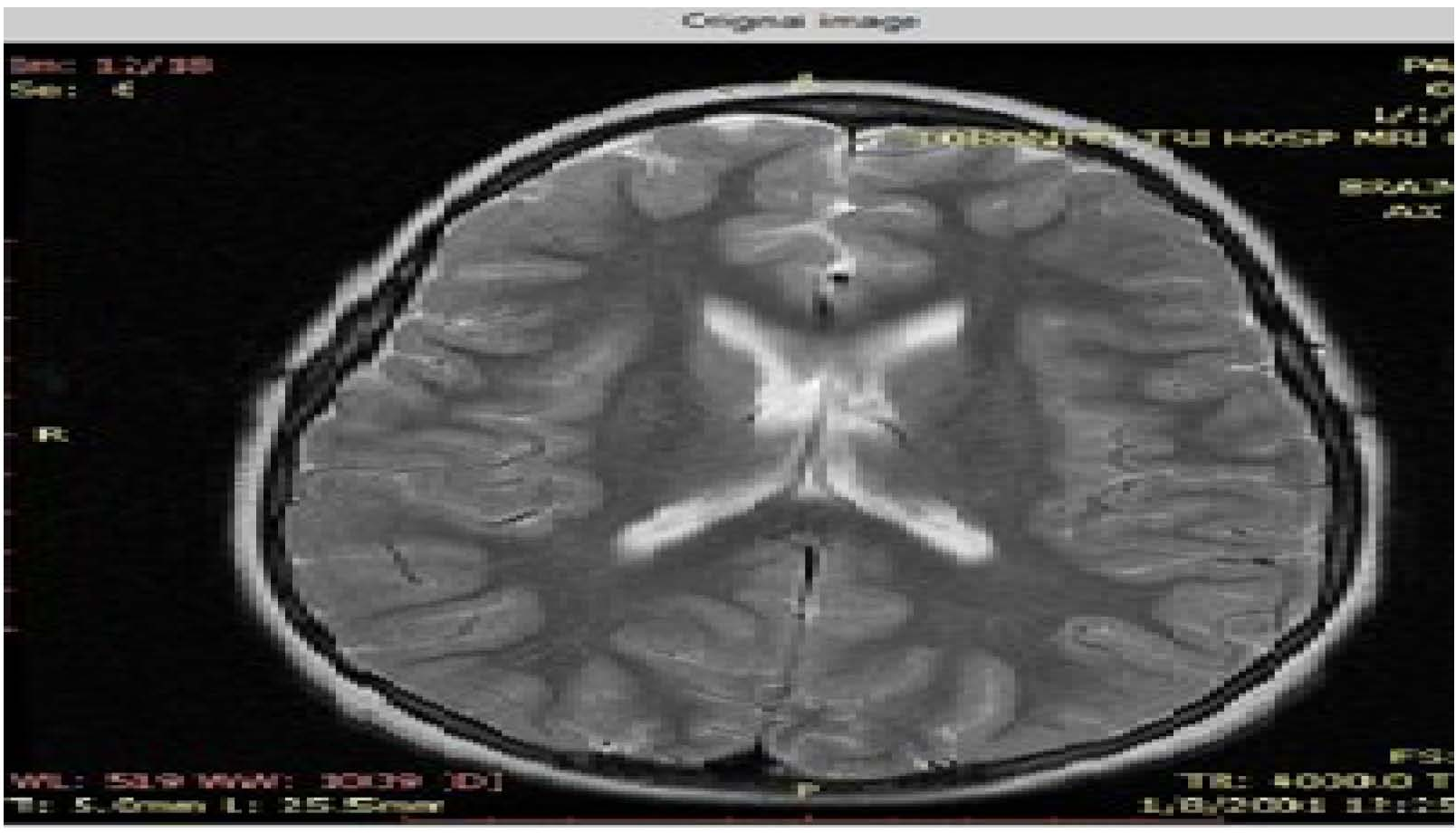
Figure 1. Original image [6].
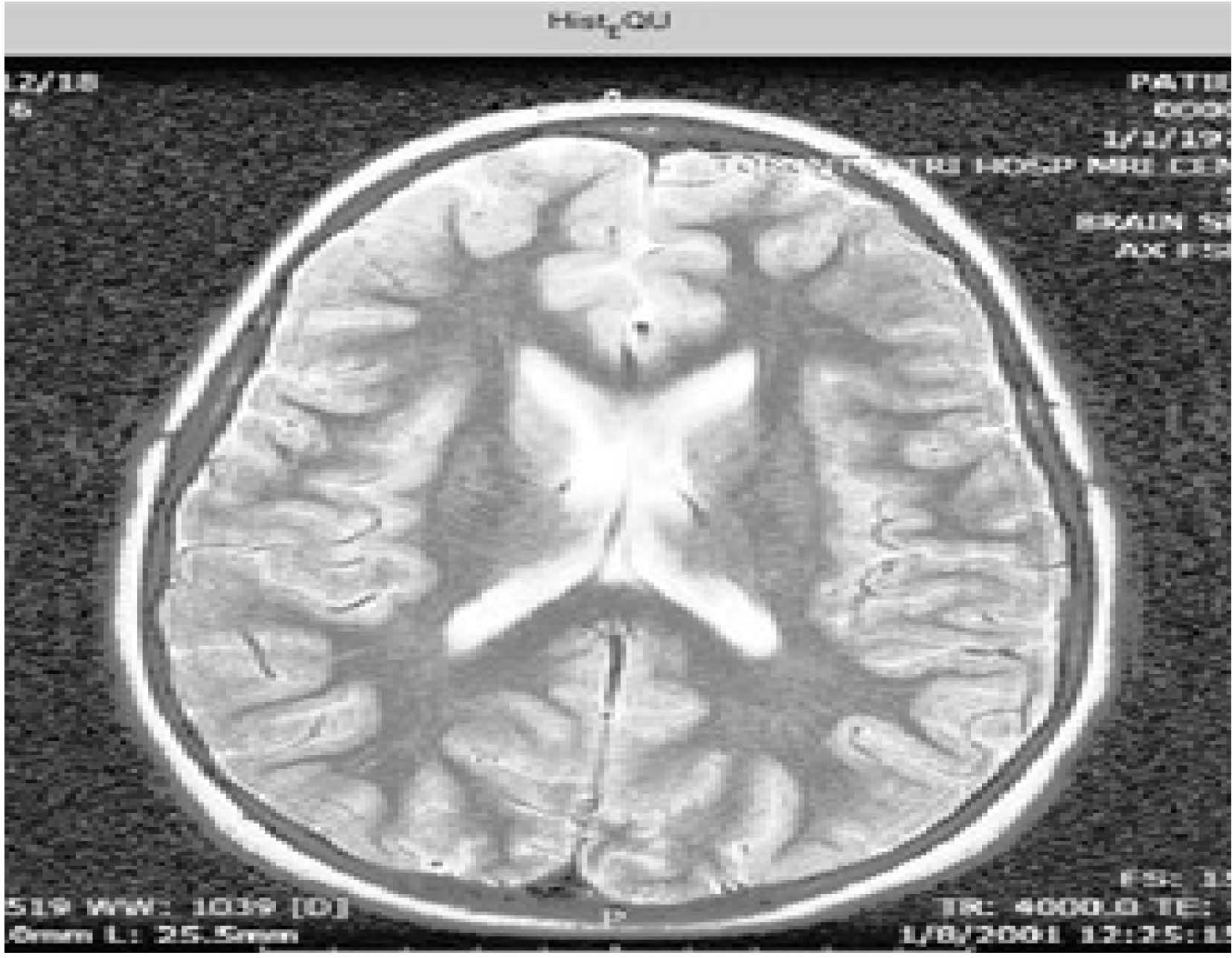
Figure 2. After applying the HE technique [6].
2.2. Adaptive Histogram Equalization
AHE technology is also widely used in digital image processing, which can improve the contrast of images and thus make them appear clearer subjectively. AHE differs from HE technique in that it improves contrast by calculating the histogram of a specific part of the image to redistribute brightness HE technique may not improve the contrast of an image for some pixels whose values are unevenly distributed or where there are parts that are brightness is different from other parts of the image, but the AHE algorithm solves this problem by equalizing each pixel by the histogram of pixels within a rectangular area around it to improve this enhancement. AHE solves the problem of edge pixels by reversaing the row or column pixels at the edge. In AHE, expansion in the copied edge pixels does not work, as this will generate histograms with spikes, which in turn will affect the image’s contrast (Figure 3).
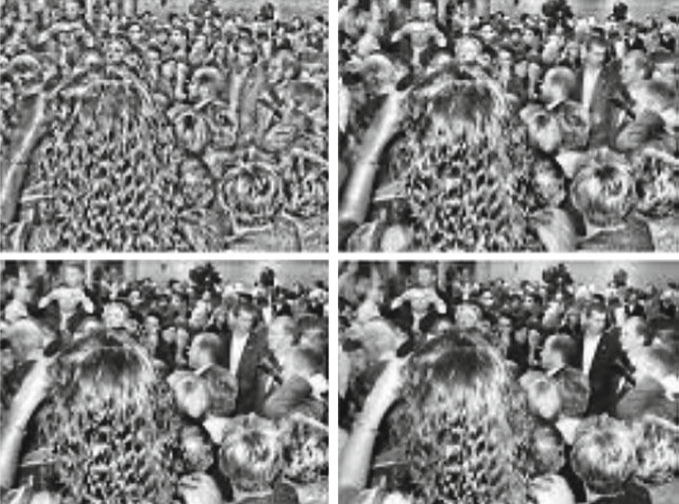
Figure 3. Adaptive histogram equalization [7].
2.3. Contrast-limited Adaptive Histogram Equalization
Another technique in analyse and perform operations on images flied is the CLAHE, which is used to boost the quality of an image while suppressing interference of noise. It uses the concept of tiles, which involves dividing the image into many small blocks and then applying the histogram equalization algorithm to each block.
In CLAHE, the accumulated histogram in the neighbourhood determines the slope of the transformation function (TF), which directly affects degree of contrast amplification. Cumulative histogram is obtained by adding the values of each bin in the histogram to the previous bins.
To limit the degree of contrast amplification, Histograms are clipped by using a predefined threshold to be in CLAHE. Clipping histogram means setting value of all bins above the threshold to the threshold. This results in the slope of the transform function being indirectly affected because the slope of the transform function is determined by the cumulative distribution function, and the threshold acts directly on the slope of the CDF to limit it. For histograms, the distribution of the it and the size of the neighborhood are two important parameters because they determine the extent to which the histogram is trimmed (also known as the trimming limit). CLAHE produces different amplification effects for images with different distributions for the same threshold.
This method can avoid the problem of over-enhancement and noise amplification that may occur in global histogram equalization. After applying CLAHE to each small block, they need to be merged into a complete image. This can be achieved using bilinear interpolation to eliminate any boundaries that may be caused by image segmentation (Figure 4).
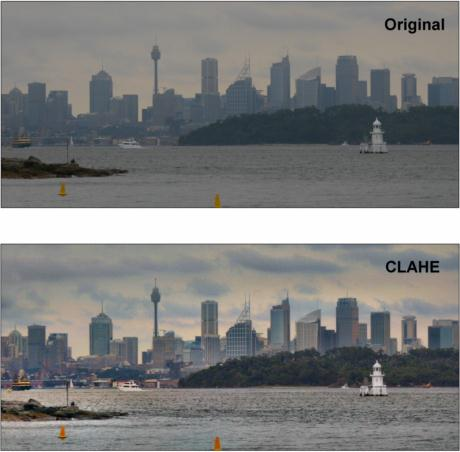
Figure 4. Unprocessed image and CLAHE processed image [8].
2.4. Brightness Preserving Bi-Histogram Equalization (BBHE)
BBHE processes image, which divided into two parts and enhances the sub-images of the main image with their significant histograms. The motivation of BBHE is to boost quality of images by mapping pixel intensities into a range. This range is determined by representing the average luminance value of the image as a partial intensity and the average intensity of all pixels as another partial intensity. BBHE firstly separate the unprocessed image to two sub-images with luminance’s average value, and obtains histograms of the 2 sub-images respectively; secondly, the 2 sub-images are equalized separately, and this method can maintain some of the mean values when the histograms of the input images are symmetrically distributed around the mean, and reduce the over-enhancement phenomenon. (Figure 5).
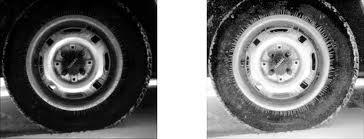
(a) (b)
Figure 5. (a) Unprocessed image (b) BBHE processed image [8].
3. Image restoration techniques
3.1. Multi-image blind deblurring
H.Zhang [9] on using a Bayesian-inspired penalty function to couple blur kernel, noise level, and unknown latent images for solving multi-image blind deconvolution. The algorithm can recover high-quality images without requiring additional parameters. The coupling penalty function is used to adjust the relative concavity of the image and consider both blur and noise [10]. The formula \( yl= kl*x + nl \) is used to describe the multi-image blind deconvolution problem, where The point spread function (PSF) is defined as \( kl \) , ∗ is the convolution operator, and Gaussian noise term is defined as \( nl \) while it possesses the covariance \( λlI \) [9]. Whether structure of the course can be accurately identified depends on the convergence, and premature convergence can be removed by a penalty function [10].
3.2. Blind motion deblurring
Blind deblurring techniques in image processing are used to process blurred images to recover a clear image. Among them, multi-frame methods are used to recover high quality clear images. Boracchi analyzed the feasibility of alternating iterative methods for recovering clear images from blurred images and identifying blurred kernels and proposed linearized Bergmann iteration for solving the exact estimation and minimization of blurred kernels [11]. There are two main problems in the field of image deconvolution one is non-blind deconvolution. Non-blind deconvolution’s aim is that an ill- conditioned problem that can be addressed by the other is blind convolution, which is subject to certain limitations and has some problems such as unknown blurred kernels and clear images, but it can still be solved by infinite solution.
3.3. Image restoration from motion blur
There are various studies on motion fuzzy recovery algorithms based on fuzzy quantities. Author J.F Russer evaluates the recovery effect by analyzing deblurring algorithms such as Monte Carlo methods or PSF (point spread functions) [12]. Among them, the Richardson-Lucy deconvolution method is used for recovery, and of course anisotropic LPA-ICI deblurring and sparse natural image a priori deconvolution can have the same effect [11]. Sharpness of recovered image within a certain exposure time can be improved by this deconvolution algorithm. In hybrid imaging system, motion measurements are performed using the first algorithm and the blur point expansion function is calculated from the motion information. The Richardson-Lucy deconvolution can be used to perform the blur inversion, and the estimation of the parameters related to the noise is also an important part. For this kind of estimation, anisotropic LPA-ICI and Lucy Richardson deconvolution are two important methods that can be used. In addition, the noise model can also be solved by using a prior deconvolution method, which can solve the problem non-explicitly. Combining these algorithms can improve the recovery of motion blurred images and achieve the recovery of high-quality clear images.
3.4. Single image Super Resolution Techniques
The acquisition of high-resolution images requires the use of super resolution (SR) techniques and multiple low-quality images of the same scene. This technique can be used to reduce the impact of various factors in the acquisition of digital images, such as equipment’s image performance, lighting conditions on the image quality, and to boost recognizability of output image content and subjective enjoyment of the image by observer.
Many methods are used to solve the problems in SR technique, initially in the frequency domain, where Fourier transform, properties are used to recover higher-frequency components. Deterministic regularization methods are more likely to incorporate a priori constraints on the solution space, which works in the spatial domain (usually with a smoothness prior) [13]. Recently, more attention has been given to stochastic methods, which can more naturally incorporate prior knowledge.
Relying solely on heuristic derived information has become slightly insufficient in the light of the increased emphasis on stochastic techniques, and exemplar data are now becoming increasingly important in a priori learning. Therefore, solving the SR problem requires a combination and balance of various methods. Specific situation and application requirements are decisive factors in choosing which method to use. In the future, high dynamic range imaging can be combined with SR technology to achieve higher dynamic range images by merging multiple photos with different exposures under the same viewpoint.
4. Conclusion
Image enhancement is an important technology because it can play a huge role in several fields that allows the quality of an image to be improved through a few algorithms different types of images require different techniques, and the choice of technique depends on the requirements for the users, the characteristics of image itself, and the viewing conditions. Image enhancement techniques are often used in a variety of applications with HE being the most frequently used, which enhances image contrast by redistributing the pixel values in the image. This article reviews existing image enhancement techniques and discusses the results of various methods. Combining single or multiple methods can rise the quality of the picture depending on the type of image, such as color or grayscale, and the degree to which it is affected by noise. However, different image enhancement methods have their own advantages and disadvantages. To overcome the drawbacks of this method, the future direction of research may be to combine multiple image enhancement techniques, based on artificial intelligence and machine deep learning technology, which are recent innovations. Image restoration is used to process distorted images, recovering details and information from the original image. Deblurring is a commonly used technique in image restoration. The removal of noise from an image, the enhancement of the image itself, and the compensation and enhancement of image edge contours can all be handled using deblurring techniques. Deblurring techniques can be achieved through deconvolution and blind deconvolution. Deconvolution requires specific information about the blur process, while blind deconvolution does not require this information. This article discusses existing deblurring techniques and analyses the implementation and possible problems of blind deblurring and non-blind deblurring. In addition, super-resolution imaging has always been one of the basic research fields. The hardware parameters of the imaging system have a large impact on its output image, often limiting parameters such as image clarity, and the use of SR technology can improve this situation to some extent, providing clearer images and richer information content. This article reviews the current research status of SR technology and prospects for future research directions.
References
[1]. P. Bhatt et al., “Image Enhancement Using Various Interpolation Methods,” International Journal of Computer Science and Information Technology, vol. 2, 2012.
[2]. K. Panetta, S. Agaian, Yicong Zhou, and E. J. Wharton, “Parameterized Logarithmic Framework for Image Enhancement,” IEEE Trans. Syst., Man, Cybern. B, vol. 41, no. 2, pp. 460–473, Apr. 2011, doi: 10.1109/TSMCB.2010.2058847.
[3]. A. Gorai and A. Ghosh, “Hue-preserving color image enhancement using particle swarm optimization,” in 2011 IEEE Recent Advances in Intelligent Computational Systems, Trivandrum, India: IEEE, Sep. 2011, pp. 563–568. doi: 10.1109/RAICS.2011.6069375.
[4]. A. Zomet, A. Rav-Acha, and S. Peleg, “Robust super-resolution,” in Proceedings of the 2001 IEEE Computer Society Conference on Computer Vision and Pattern Recognition. CVPR 2001, Kauai, HI, USA: IEEE Comput. Soc, 2001, p. I-645-I–650. doi: 10.1109/CVPR.2001.990535.
[5]. D. Capel and A. Zisserman, “Super-resolution enhancement of text image sequences,” in Proceedings 15th International Conference on Pattern Recognition. ICPR-2000, Barcelona, Spain: IEEE Comput. Soc, 2000, pp. 600–605. doi: 10.1109/ICPR.2000.905409.
[6]. H. Kaur and J. Rani, “MRI brain image enhancement using Histogram Equalization techniques,” in 2016 International Conference on Wireless Communications, Signal Processing and Networking (WiSPNET), Chennai, India: IEEE, Mar. 2016, pp. 770–773. doi: 10.1109/WiSPNET.2016.7566237.
[7]. S. Shashi B. Rana, “A Review of Medical Image Enhancement Techniques for Image Processing,” International Journal of Current Engineering and Technology, vol. 5, no. 2, pp. 1282–1286, Jan. 2011, doi: 10.14741/Ijcet/22774106/5.2.2015.121.
[8]. D. H. Rao and P. P. Panduranga, “A Survey on Image Enhancement Techniques: Classical Spatial Filter, Neural Network, Cellular Neural Network, and Fuzzy Filter,” in 2006 IEEE International Conference on Industrial Technology, Mumbai, India: IEEE, 2006, pp. 2821–2826. doi: 10.1109/ICIT.2006.372671.
[9]. G. Boracchi and A. Foi, “Modeling the Performance of Image Restoration From Motion Blur,” IEEE Trans. on Image Process., vol. 21, no. 8, pp. 3502–3517, Aug. 2012, doi: 10.1109/TIP.2012.2192126.
[10]. A. Mahalakshmi and B. Shanthini, “A survey on image deblurring,” in 2016 International Conference on Computer Communication and Informatics (ICCCI), Coimbatore, India: IEEE, Jan. 2016, pp. 1–5. doi: 10.1109/ICCCI.2016.7479956.
[11]. D. G. Lowe, “Distinctive Image Features from Scale-Invariant Keypoints,” International Journal of Computer Vision, vol. 60, no. 2, pp. 91–110, Nov. 2004, doi: 10.1023/B:VISI.0000029664.99615.94.
[12]. H. Zhang, D. Wipf, and Y. Zhang, “Multi-image Blind Deblurring Using a Coupled Adaptive Sparse Prior,” in 2013 IEEE Conference on Computer Vision and Pattern Recognition, Portland, OR, USA: IEEE, Jun. 2013, pp. 1051–1058. doi: 10.1109/CVPR.2013.140.
[13]. R. R. M. Rujul R. Makwana, “Survey on Single image Super Resolution Techniques,” IOSR-JECE, vol. 5, no. 5, pp. 23–33, 2013, doi: 10.9790/2834-0552333.
Cite this article
Li,Y. (2023). Digital signal processing techniques for image enhancement and restoration. Applied and Computational Engineering,17,198-205.
Data availability
The datasets used and/or analyzed during the current study will be available from the authors upon reasonable request.
Disclaimer/Publisher's Note
The statements, opinions and data contained in all publications are solely those of the individual author(s) and contributor(s) and not of EWA Publishing and/or the editor(s). EWA Publishing and/or the editor(s) disclaim responsibility for any injury to people or property resulting from any ideas, methods, instructions or products referred to in the content.
About volume
Volume title: Proceedings of the 5th International Conference on Computing and Data Science
© 2024 by the author(s). Licensee EWA Publishing, Oxford, UK. This article is an open access article distributed under the terms and
conditions of the Creative Commons Attribution (CC BY) license. Authors who
publish this series agree to the following terms:
1. Authors retain copyright and grant the series right of first publication with the work simultaneously licensed under a Creative Commons
Attribution License that allows others to share the work with an acknowledgment of the work's authorship and initial publication in this
series.
2. Authors are able to enter into separate, additional contractual arrangements for the non-exclusive distribution of the series's published
version of the work (e.g., post it to an institutional repository or publish it in a book), with an acknowledgment of its initial
publication in this series.
3. Authors are permitted and encouraged to post their work online (e.g., in institutional repositories or on their website) prior to and
during the submission process, as it can lead to productive exchanges, as well as earlier and greater citation of published work (See
Open access policy for details).
References
[1]. P. Bhatt et al., “Image Enhancement Using Various Interpolation Methods,” International Journal of Computer Science and Information Technology, vol. 2, 2012.
[2]. K. Panetta, S. Agaian, Yicong Zhou, and E. J. Wharton, “Parameterized Logarithmic Framework for Image Enhancement,” IEEE Trans. Syst., Man, Cybern. B, vol. 41, no. 2, pp. 460–473, Apr. 2011, doi: 10.1109/TSMCB.2010.2058847.
[3]. A. Gorai and A. Ghosh, “Hue-preserving color image enhancement using particle swarm optimization,” in 2011 IEEE Recent Advances in Intelligent Computational Systems, Trivandrum, India: IEEE, Sep. 2011, pp. 563–568. doi: 10.1109/RAICS.2011.6069375.
[4]. A. Zomet, A. Rav-Acha, and S. Peleg, “Robust super-resolution,” in Proceedings of the 2001 IEEE Computer Society Conference on Computer Vision and Pattern Recognition. CVPR 2001, Kauai, HI, USA: IEEE Comput. Soc, 2001, p. I-645-I–650. doi: 10.1109/CVPR.2001.990535.
[5]. D. Capel and A. Zisserman, “Super-resolution enhancement of text image sequences,” in Proceedings 15th International Conference on Pattern Recognition. ICPR-2000, Barcelona, Spain: IEEE Comput. Soc, 2000, pp. 600–605. doi: 10.1109/ICPR.2000.905409.
[6]. H. Kaur and J. Rani, “MRI brain image enhancement using Histogram Equalization techniques,” in 2016 International Conference on Wireless Communications, Signal Processing and Networking (WiSPNET), Chennai, India: IEEE, Mar. 2016, pp. 770–773. doi: 10.1109/WiSPNET.2016.7566237.
[7]. S. Shashi B. Rana, “A Review of Medical Image Enhancement Techniques for Image Processing,” International Journal of Current Engineering and Technology, vol. 5, no. 2, pp. 1282–1286, Jan. 2011, doi: 10.14741/Ijcet/22774106/5.2.2015.121.
[8]. D. H. Rao and P. P. Panduranga, “A Survey on Image Enhancement Techniques: Classical Spatial Filter, Neural Network, Cellular Neural Network, and Fuzzy Filter,” in 2006 IEEE International Conference on Industrial Technology, Mumbai, India: IEEE, 2006, pp. 2821–2826. doi: 10.1109/ICIT.2006.372671.
[9]. G. Boracchi and A. Foi, “Modeling the Performance of Image Restoration From Motion Blur,” IEEE Trans. on Image Process., vol. 21, no. 8, pp. 3502–3517, Aug. 2012, doi: 10.1109/TIP.2012.2192126.
[10]. A. Mahalakshmi and B. Shanthini, “A survey on image deblurring,” in 2016 International Conference on Computer Communication and Informatics (ICCCI), Coimbatore, India: IEEE, Jan. 2016, pp. 1–5. doi: 10.1109/ICCCI.2016.7479956.
[11]. D. G. Lowe, “Distinctive Image Features from Scale-Invariant Keypoints,” International Journal of Computer Vision, vol. 60, no. 2, pp. 91–110, Nov. 2004, doi: 10.1023/B:VISI.0000029664.99615.94.
[12]. H. Zhang, D. Wipf, and Y. Zhang, “Multi-image Blind Deblurring Using a Coupled Adaptive Sparse Prior,” in 2013 IEEE Conference on Computer Vision and Pattern Recognition, Portland, OR, USA: IEEE, Jun. 2013, pp. 1051–1058. doi: 10.1109/CVPR.2013.140.
[13]. R. R. M. Rujul R. Makwana, “Survey on Single image Super Resolution Techniques,” IOSR-JECE, vol. 5, no. 5, pp. 23–33, 2013, doi: 10.9790/2834-0552333.









